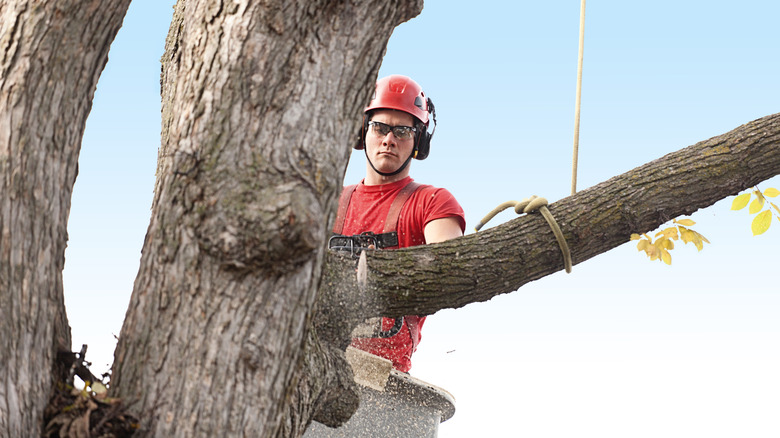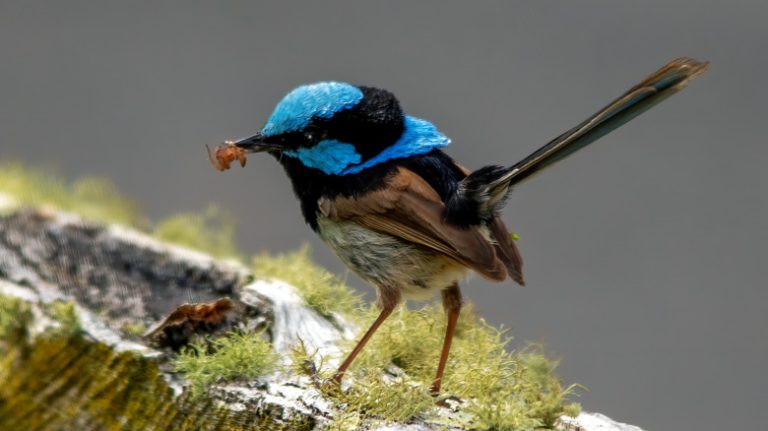If you’re new to hiking or love exploring forests, you may have come across trees with certain painted markings. There isn’t a specific fixed meaning for tree markings, but understanding them can be central to safety.
The lumber trading process — a procedure that comes with deciding a tree’s volume of timber and wood chips — is a major reason why tree marking is essential to any forest. Once the landscape is mapped for workers and members of the community, that’s when additional markings are placed to evaluate the number of trees in an area, which are then categorized into groups based on their trunk diameter. Then the color system comes into play.
Just take the Sunriver Owner’s Association, for example. Within their community, pink dots can symbolize property lines and pink and blue flags together can indicate an abrupt turn in the property line. Polka dot or wired markings translate to freshly planted seeds nearby. Red means trespassing, and green indicates an upcoming removal, likely due to an infestation. The form of communication used by landowners has a varied appearance, so be sure to research your county’s navigation system. Hunters Land Management’s community declared orange-painted tree markings as a warning to identify harvest borders. But what does it mean when you see yellow markings on a tree?
Here’s what a yellow marking means

Yellow markings help construction workers, landowners, and ordinary people to navigate their local forestry. The most recent Tree Marking Paint Committee meeting held in Charleston, South Carolina revealed that yellow is one of the sturdiest colors, outlasting both pink and blue. The most common meanings of yellow markings fall under the umbrella of long-term harvesting for raw materials, or to instate property lines.
A private consulting forester shared with the University of Wisconsin-Madison Division of Extension that, though yellow is typically used to identify a row of trees ready for harvest in Wisconsin, dots and lines mean drastically different things. A resident of Smithsburg, Maryland noted in a community discussion that yellow bands around trees showcase state boundaries. A user on Reddit noted that in their community, yellow dots symbolize incoming private contracting. Watching for signals is the best way to anticipate a yellow marking. If a tree is marking an upcoming landscape, you’ll see one yellow tree to indicate where the property of ready-to-harvest trees begins, with a variety of blue, orange, and green past that point. This showcases whether those trees will be taken or spared in the upcoming harvest.
Try to know each meaning and use it as a discretionary rule. If you want to grow your knowledge of this tree language, you can research content creators. Instagram user, waterfall.hunter uses his platform to help communities understand local flora and fauna so followers can be better equipped for outdoor adventures.
A few tree marking continuities do exist, but not many
Now we know what you’re thinking. How can anybody go into a forest and properly understand the markings? Donna Nemeth, USFS regional press officer of the U.S Forest Service noted that some universal standards do exist. Anything red is often translated to a boundary for government-owned areas, while purple is a warning that you may be trespassing if you continue walking in a specific area. Black often serves as an eraser when a painted mistake happens. Though most painting systems change annually, this can still be a helpful tidbit to keep you safe.
Note that several other methods go beyond painting on trees for communication. A tree’s number of slashes, stump marks, branches cut back to the trunk, and numbers painted on the tree all play a significant role, as these sometimes serve as more long-lasting “signs.”
Like paint markings, this process depends on your location. That’s why we recommend exploring the specific markings based on your town or county. Your town forestry department can assist, and may even have more details on their website. For example, in Boulder, Colorado, some maps allow you to view trees and research nearby species from an aerial perspective. Though there isn’t a single exact answer as to what yellow tree markings signify, prioritize your safety and be sure to do your research before you go on your next hike.
